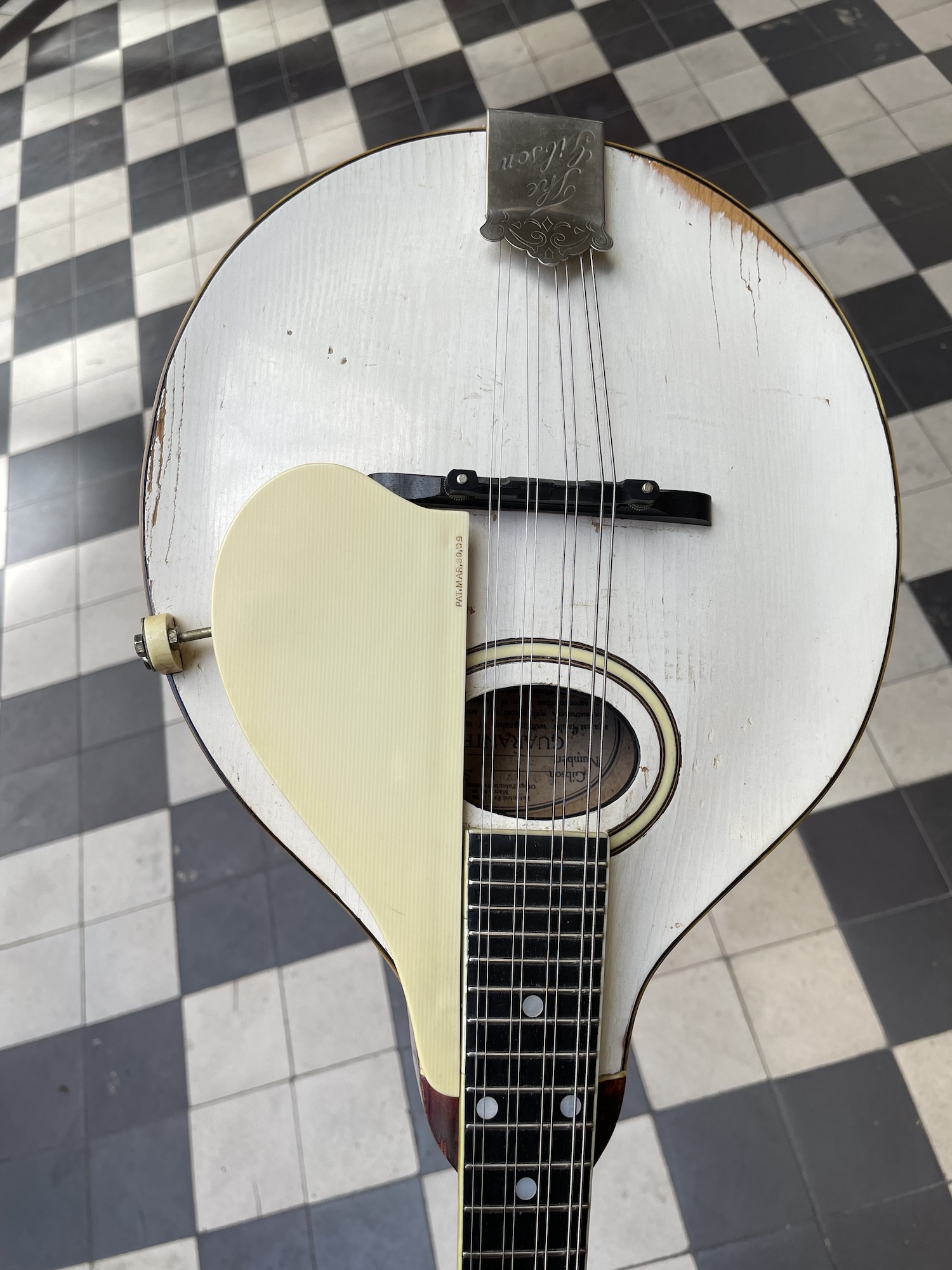1920 GIBSON STYLE A-3 MANDOLIN
€4.000,00
The prices indicated correspond to the price in the case of payment in-store or by bank transfer. In the case of payment by credit card via the website, a processing fee of [3.25% + €0.25]* will be applied to the total amount of the basket, including delivery costs.
A beautiful 1920 Gibson Style A-3 mandolin, in very good condition.
Beginning in 1918, Gibson introduced a new appearance for their A-3 model, in the form of a top finish designated as “beautiful old ivory” (sic). This distinguished the A-3 mandolin from other models with natural, “pumpkin”, sunburst or black finishes. This white finish was unique to the A-3 model, and was only used for a short period between 1918 and 1923 – although outside of this period, a few rare mandolins were custom ordered in this colour, it was never to reappear in the catalogue after 1923 as Gibson sought to reduce the diversity of features on their instruments in order to increase their output.
To complement the monochrome look of this “ivory” finish, Gibson also equipped the model with a double white and black binding around the table, a rosette in contrasting black and white binding, and a single white binding around the back and neck. The pickguard and the plastic part of its clamp are made of a celluloid material that superbly imitates the grain of ivory – this material is also unique to the A-3 model for mandolins, although Gibson also used it for some of its banjo models. For the rest, the characteristics are identical to the pre-1918 A-3: back and sides in stained maple, “The Gibson” and a vine design inlaid in pearl on the headstock, tailpiece cover engraved with “The Gibson”.
The instrument is also equipped with its original adjustable ebony bridge, a major innovation on Gibson instruments in the 1920s. This part, invented and patented by Ted McHugh (the workshop superintendent at the Kalamazoo factory from 1915 until the 1940s), replaces the fixed bridge used up until then – this solves a inherent problem in the construction of carved top mandolins: when new instruments left the factory, during their first years of playing and under the tension of the strings the top would sometimes sag slightly before settling into its final shape. However, this movement of the top wood required sending the instrument back to the factory or to a craftsman in order to place a shim under the base of the fixed bridge in order to find the desired height. The adjustable bridge perfectly addresses this problem, since it allows the height of the strings to be adjusted freely and at any time – this design was so successful that it is still found today ubiquitously on the vast majority of archtop or hollowbody guitars. It should be noted that Ted McHugh is also at the origin of the truss rod, an invention for which he obtained a patent in 1923, this other element being just as central to the development of the guitar in the 20th century and still systematically used to this day. Thus, we realize to what extent the mandolin was a vector of innovation and modernity for the decades to come, obviously for Gibson but also for the instrument manufacturing industry as a whole which will appropriate and improve the concepts established in Kalamazoo, already a century ago!
The instrument, from the height of its 104 years, bears witness to constant and careful use: we note a beautiful patina from long jours of playing on its varnish; its tuners were replaced a long time ago by a high-end gold-plated set with mother-of-pearl buttons. This mandolin has been fully optimized for playing in our workshop: levelling and polishing of the frets, crafting of a new bone nut, adjustment of the action and intonation at the bridge. Thus, we find all the playing comfort and intonation that it is possible to get from this mandolin which is, at the time of its creation as today, an instrument of unequaled quality!
Sold in its original Geib hardshell case.














